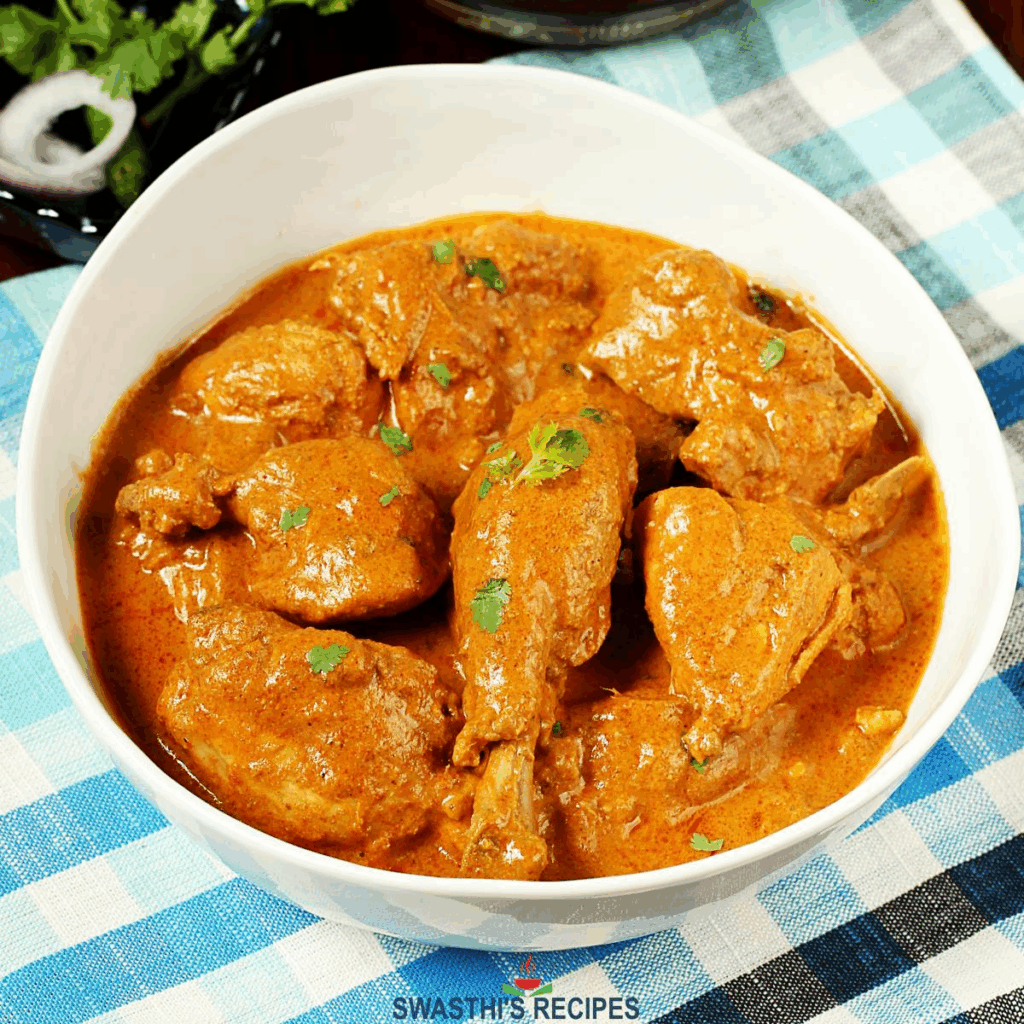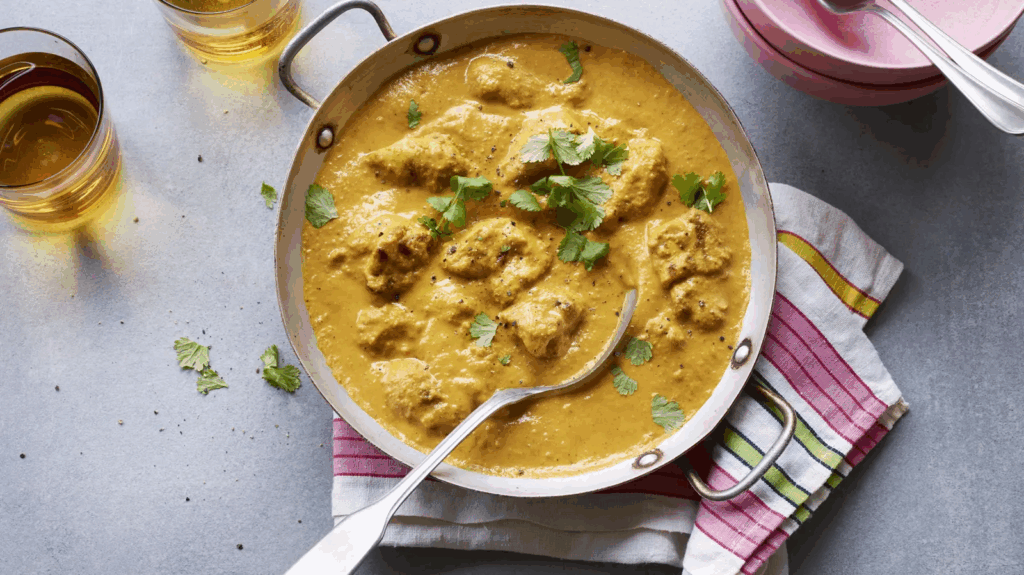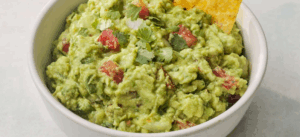What is Korma Curry and How to Prepare It

If there’s one dish that always brings comfort and elegance together in a single bite, it’s korma curry. As a chef working across both Indian and international kitchens, I’ve made countless versions—from nutty Mughlai styles to coconut-based South Indian twists. Korma is where spice meets silk. In this guide, I’ll walk you through every detail of making a truly satisfying korma—from ingredient selection to mastering slow cooker and oven techniques.
- The Origins and Meaning of Korma
- Essential Ingredients for Traditional Korma
- Cooking Time and Prep Overview
- Choosing Between Chicken, Lamb, or Vegetarian Korma
- How to Make the Nut and Spice Base
- Cooking Korma on the Stove
- Using the Slow Cooker for Effortless Korma
- Baking Korma in the Oven for Rich, Even Flavor
- Microwave and Pressure Cooker Methods
- Pairing Korma with the Right Sides
- Regional and Modern Variations of Korma
- Storage and Reheating Tips
- Mistakes to Avoid When Making Korma
- Serving Suggestions for Every Occasion
- Final Thoughts from My Kitchen
- FAQ – Frequently Asked Questions

The Origins and Meaning of Korma
Korma traces its roots back to the royal Mughal kitchens of Northern India. The word itself comes from the Urdu qorma, meaning “braise.” That’s exactly the essence of this dish: gently cooked meat or vegetables simmered in a rich, spiced sauce.
Historically, Mughlai korma featured saffron, cream, and a blend of expensive nuts like cashews or almonds—ingredients fit for royalty. Over time, it adapted to regional palates. In the South, you’ll find coconut milk replacing cream. In Western takes (like the ones I’ve served in London or New York), sugar and raisins are often added for sweetness.
The beauty of korma is that it respects the core method—slow braising in a creamy, fragrant base—while letting each culture interpret it anew.
Essential Ingredients for Traditional Korma
When I make a traditional North Indian-style korma, I always begin with this base:
- Meat or Vegetables: Chicken is most popular, but lamb, beef, or paneer work beautifully.
- Yogurt or Cream: This adds body and a gentle tang.
- Ground Nuts: Cashews or almonds, soaked and blended, form the luxurious base.
- Onions: Fried to golden-brown perfection, forming the flavor backbone.
- Whole Spices: Cardamom, cloves, bay leaves, cinnamon—simmered in oil to perfume the dish.
- Ground Spices: Coriander, cumin, turmeric, sometimes a pinch of garam masala.
- Aromatics: Fresh ginger and garlic paste bring warmth and depth.
In my restaurant kitchen, I sometimes add a touch of rose water or saffron for guests who want an “authentic royal” finish. But even a simple homemade version, done right, will taste like something truly special.

Cooking Time and Prep Overview
Here’s a detailed cooking and preparation time breakdown, which I use in both home and professional kitchens:
| Task | Duration | Notes |
| Soaking nuts (almonds/cashews) | 20–30 min | Optional but ideal for creamy texture |
| Marinating meat in yogurt | 30–60 min | Adds tenderness and flavor |
| Frying onions | 15–20 min | Needs patience; go for golden brown |
| Making curry base | 10–15 min | Spices, nut paste, and yogurt blend |
| Simmering the curry | 25–40 min | Depends on meat cut or veg type |
| Total active time | 45–60 min | With multitasking |
| Total cook time (slow cooker) | 4–6 hours | Low heat, minimal monitoring |
This timing works for both stovetop and oven variations. I’ll explore each method in more depth in upcoming sections.
Choosing Between Chicken, Lamb, or Vegetarian Korma
Over the years, I’ve made korma with everything from goat meat to tofu, and the choice always depends on the mood—and the guests. Let’s talk about the most common proteins and how they change the final dish.
Chicken korma is the classic choice. It cooks relatively fast and absorbs spices well. I prefer bone-in thighs or legs, which stay juicy and lend richness to the sauce.
Lamb korma takes more time but rewards you with deep, meaty flavor. I slow-braise shoulder or shank cuts until they’re meltingly tender. The richness of lamb marries perfectly with creamy sauces.
Vegetarian korma is no less satisfying. Paneer is a favorite—it holds its shape and soaks up the spices. Cauliflower, peas, and carrots also work beautifully when blanched briefly before adding to the sauce.
When catering to vegan guests, I’ve swapped in coconut cream and tofu. While it’s a departure from the traditional, the result still carries that luxurious essence of korma.

How to Make the Nut and Spice Base
If the heart of korma is its gentle braising, then the soul is its base—the rich, spiced sauce made from nuts, onions, and dairy or coconut.
Here’s how I prepare it in my kitchen:
- Soak cashews or blanched almonds in warm water for at least 20 minutes, then blend them with a little liquid until creamy. This gives the sauce its velvety feel.
- Fry thinly sliced onions in ghee or oil over medium-low heat until deeply golden. This takes time, but it builds depth. I often add a pinch of salt to speed up caramelization.
- Add ginger-garlic paste and whole spices (cloves, cardamom, bay leaves, cinnamon) to perfume the base.
- Once fragrant, stir in ground coriander, cumin, turmeric, and chili powder for warmth.
- Add the nut paste and stir continuously until the oil starts to separate. Then slowly fold in the yogurt or cream, whisking to prevent curdling.
This base can be made ahead of time and stored in the fridge for up to 2 days. When I’m cooking for a crowd, I scale this up and freeze in batches—it reheats beautifully.
Cooking Korma on the Stove
This is my go-to method at home and for small-scale service. Cooking korma on the stovetop gives you the most control over texture and layering of flavor.
I begin by browning the marinated meat slightly, just to seal in juices. Then I remove it and prepare the nut-and-spice base in the same pan. Once the base is thick and fragrant, I reintroduce the meat and add enough water or stock to just cover it.
I bring it to a simmer, cover, and let it cook slowly for 30–40 minutes for chicken, or longer for lamb. The key is low heat and gentle bubbles. Stir occasionally to prevent sticking, and adjust the salt and heat toward the end.
Sometimes, I finish with a spoon of cream or a drizzle of saffron water for elegance. When served with naan or rice, it’s a dish that feels both comforting and refined.

Using the Slow Cooker for Effortless Korma
When I’m catering multiple dishes or hosting guests and want to stay out of the kitchen, the slow cooker is a game-changer for korma. It lets all the flavors deepen without constant attention.
Here’s how I do it:
- I start by making the spice and nut base on the stovetop as described above.
- Then I layer it into the slow cooker with the raw marinated meat.
- Add just enough liquid—stock or water—to keep it moist, not soupy.
- Cook on low for 6 hours (or high for about 3–4 hours) until the meat is fully tender.
What I love about this method is how the sauce thickens naturally, and the meat becomes pull-apart soft. Near the end, I open the lid slightly to let excess moisture evaporate and finish with a splash of cream or coconut milk.
It’s a great make-ahead method, especially for lamb or beef korma, which benefits from long, slow cooking. I’ve even transported it directly in the cooker to events—guests never guess how hands-off it was.
Baking Korma in the Oven for Rich, Even Flavor
Baking korma in the oven is one of my favorite restaurant tricks—especially when cooking large trays for events. It allows the flavors to mellow and marry slowly, creating an incredibly rich and uniform curry.
Here’s how I prepare it:
I start the same way: build the spice base on the stove, combine it with marinated meat, then transfer everything into an oven-safe casserole dish. I tightly cover the dish with foil or a lid and bake at 160°C (320°F) for about 45–60 minutes.
Chicken pieces emerge juicy and bathed in a silky sauce. For lamb or beef, I bake for closer to 90 minutes to achieve that tender, fall-apart texture. Occasionally, I’ll stir once halfway through to prevent sticking.
Oven-baked korma is ideal when preparing accompaniments simultaneously—it frees the stovetop and gives you space to focus on your rice or bread.
Microwave and Pressure Cooker Methods
Microwave Method
I’ll be honest—I don’t recommend cooking korma entirely in the microwave, but I have used it in tight situations for reheating or quick small-batch meals.
To microwave a simplified korma:
- Mix pre-cooked meat with ready-made or leftover korma sauce.
- Microwave in a covered dish on medium power for 5–7 minutes. Stir halfway through to ensure even heating.
- Let it rest a minute before serving.
It’s convenient but won’t develop flavor like stovetop or slow-cooker versions.
Pressure Cooker
Pressure cooking is another lifesaver when you’re short on time but still want full-bodied korma.
Here’s how I use it:
- Prepare the nut-spice base in the cooker pot.
- Add marinated meat and just enough water or stock to create pressure.
- Lock the lid and cook on medium pressure for 15–20 minutes (chicken) or 30 minutes (lamb/beef).
- Naturally release pressure, stir in cream or coconut milk, and simmer uncovered for 5 minutes.
This method preserves deep flavor with speed. I’ve used it in busy kitchens during festival season—it never disappoints.
Pairing Korma with the Right Sides
Pairing is everything. Korma is gentle, creamy, and aromatic, so it pairs beautifully with plain or lightly spiced sides that complement rather than compete. Here’s how I typically plate korma for different meals and settings:
| Side Dish | Why It Works | When to Serve |
| Basmati Rice | Neutral, fluffy, lets the sauce shine | Daily meals, lunch boxes |
| Jeera Rice | Adds light cumin aroma, boosts flavor subtly | Dinner service, formal settings |
| Naan Bread | Chewy, soaks up sauce perfectly | Casual dinners, family meals |
| Roti or Chapati | Lighter than naan, rustic feel | Vegan menus, quick lunches |
| Paratha | Rich and layered, ideal for special occasions | Festivals, weekend feasts |
| Saffron Rice | Adds luxury and fragrance | Wedding menus, banquets |
| Cucumber Raita | Cools and balances spice | Summer meals, children’s menus |
| Mango Chutney | Sweet and tangy contrast | Buffet-style spreads |
At events, I often create tasting plates with korma, rice, and a trio of breads—it always gets rave reviews.
Regional and Modern Variations of Korma
Korma adapts beautifully to both local traditions and modern creativity. Over the years, I’ve experimented with countless versions in my kitchens, and here are some notable adaptations:
- South Indian Korma: Uses coconut milk instead of yogurt or cream. More fluid, often spicier, and vegan-friendly.
- Hyderabadi Korma: Rich with fried onions, ground poppy seeds, and often served with biryani rice.
- British Curry House Korma: Sweeter, with added cream, raisins, and sometimes even pineapple for a milder, kid-friendly dish.
- Vegan Korma: Swaps out yogurt/cream with cashew cream or coconut milk, and meat with tofu, jackfruit, or veggies.
- Korma with Seafood: Though uncommon, I’ve made prawn and fish kormas using quick-cooking proteins in a lighter sauce base.
- Dry Korma: Less gravy, ideal as a filling for wraps or served with grilled flatbread.
In the same way that dishes like Zimbabwean sadza with meat or Fish soup from Sierra Leone vary from village to city, korma travels and adapts without losing its identity.
Storage and Reheating Tips
One of the best things about korma is how well it stores and even improves over time. The flavors deepen overnight, making leftovers arguably better than the first serving.
When I store korma, I use airtight glass containers and refrigerate for up to 4 days. The dairy or coconut base holds up well if the curry is cooled completely before sealing.
To freeze, I divide portions into freezer-safe containers and label them by protein (chicken, lamb, etc.). Korma keeps well for up to 2 months in the freezer. Just thaw in the fridge overnight before reheating.
Reheating is best done gently on the stovetop over low heat, stirring occasionally to keep the sauce smooth. If needed, I add a splash of cream or broth to revive the texture. Microwave reheating also works—use medium power and stir halfway through.
Mistakes to Avoid When Making Korma
After years of making this dish, I’ve seen (and made) almost every mistake possible. These are the most common ones and how to avoid them:
- Overheating the dairy: Yogurt or cream curdles when added to very hot sauce. I always temper it or reduce heat before adding.
- Skipping the nut paste: Some shortcuts skip this step, but it’s what gives the dish its luxurious mouthfeel. Blend it well for best results.
- Underseasoning: Korma is mild, but not bland. Salt, spice, and aromatics need to be balanced—taste as you go.
- Rushing the onions: Caramelizing onions is time-consuming but essential. Light or raw-tasting onions ruin the base.
- Adding too much liquid: A watery korma loses richness. Add liquid slowly and simmer until thick.
- Burning the spices: Toast them briefly in oil—not until black. Otherwise, they’ll turn bitter and overpower the dish.
A gentle hand and attention to timing make all the difference.
Serving Suggestions for Every Occasion
Korma is one of those versatile dishes that can play the starring role at a wedding banquet or serve as weekday comfort food. Here’s how I style it for different settings:
Weeknight Dinner: Chicken or paneer korma with plain basmati rice and cucumber raita. Quick, soothing, and minimal effort.
Dinner Party: Lamb korma with jeera rice, naan, and a side of pickled onions. I serve it in copper bowls for that touch of elegance.
Festive Event: Add saffron to the rice, use cashew cream, and garnish with slivered almonds and fresh coriander. Serve alongside biryani or a lentil dish.
Kids’ Menu: Mild, creamy korma with boneless chicken and naan cut into triangles—always a hit.
Vegetarian Spread: Mix-and-match with aloo gobi, dal makhani, and korma for rich flavor variety without meat.
A little garnish—like rose petals, crispy shallots, or ghee drizzle—elevates korma instantly.
Final Thoughts from My Kitchen
Making korma is about more than just combining ingredients—it’s about taking your time, respecting the layers of flavor, and building a sauce that wraps around your chosen meat or vegetables like silk. Whether you cook it slowly in a pot or let your oven do the work, the essence of korma remains the same: comfort, depth, and elegance.
This dish has followed me from family dinners to five-star menus, and I never tire of it. With a few pantry staples and care in your process, you’ll have a curry that impresses and satisfies every time.
FAQ – Frequently Asked Questions
Can I make korma without nuts?
Yes, and I’ve done so for allergy-sensitive guests. I usually replace the nut paste with full-fat Greek yogurt or use white poppy seeds blended with cream for similar richness.
What’s the difference between korma and butter chicken?
From my experience, korma is more about nuts and yogurt with warm spices, while butter chicken uses tomatoes and cream with a sweeter, smokier tone.
Is korma always mild?
Not necessarily. I’ve made spicy kormas using green chilies or extra garam masala. But it’s generally less fiery than dishes like vindaloo or madras.
Can I use store-bought korma paste?
You can, and I’ve tried it on busy nights. It works for quick meals, but homemade paste always tastes fresher and more layered.
Is it possible to make korma ahead of time?
Absolutely. In fact, I often prepare it the night before events—it tastes even better the next day.
How do I make vegan korma?
From my experience, coconut milk or cashew cream work beautifully. Use tofu or chickpeas instead of meat, and skip the ghee.
What’s the best cut of meat for lamb korma?
I recommend lamb shoulder or leg. They have the fat and connective tissue that break down during slow cooking for amazing texture.
Can I use milk instead of cream or yogurt?
I’ve tried it, but it lacks the body and tang. If that’s all you have, reduce it slowly and add a bit of flour or cornflour for thickness.
What oil should I use for frying the spices?
I usually use ghee for richness, but neutral oils like sunflower or avocado oil also work.
Can korma be made spicy?
Yes, just add more chili powder, green chilies, or spicy garam masala. I’ve customized it many times for guests who wanted heat.
How do I fix a curdled korma?
Take it off heat immediately, whisk in a little cold cream, and blend if needed. I’ve saved a few batches this way.
What rice goes best with korma?
Basmati rice is my go-to. For special occasions, I’ll add saffron or whole spices to the rice.
Can I cook korma with fish?
Yes, but use firm fish like cod or tilapia. Add it late in the cooking process so it doesn’t fall apart. I’ve done this for coastal menus.
How long does korma last in the fridge?
From my experience, up to 4 days safely. Just make sure it cools completely before storing.
Is it okay to reheat korma multiple times?
I try to reheat only once per portion to preserve flavor and food safety. Reheat gently and never boil it harshly.




Post Comment